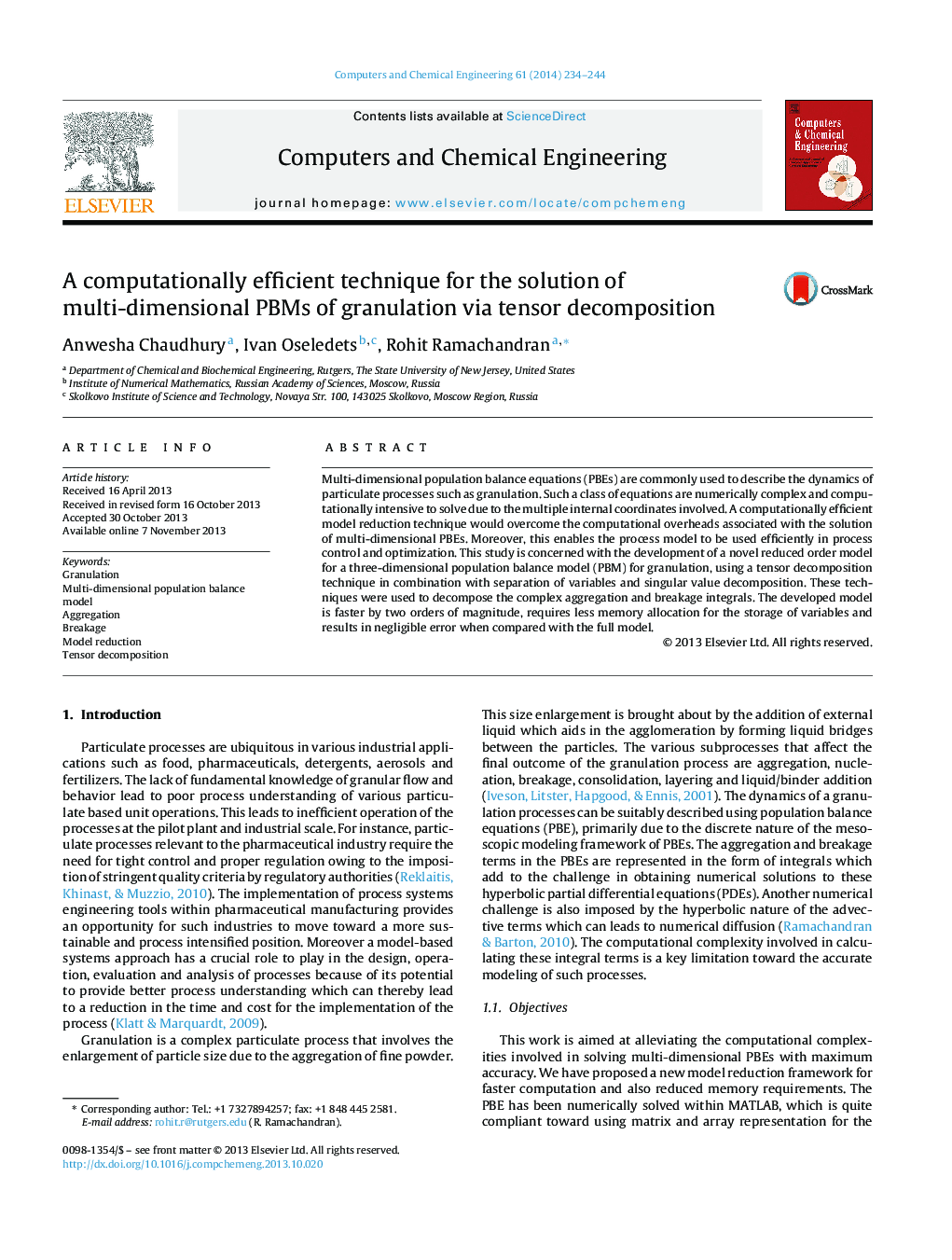| Article ID | Journal | Published Year | Pages | File Type |
|---|---|---|---|---|
| 172488 | Computers & Chemical Engineering | 2014 | 11 Pages |
•A novel reduced order method for solving multi-dimensional population balance models was formulated.•The reduced order model was able to accurately describe the key process dynamics.•The reduced order model was two orders of magnitude faster than the full population balance model.
Multi-dimensional population balance equations (PBEs) are commonly used to describe the dynamics of particulate processes such as granulation. Such a class of equations are numerically complex and computationally intensive to solve due to the multiple internal coordinates involved. A computationally efficient model reduction technique would overcome the computational overheads associated with the solution of multi-dimensional PBEs. Moreover, this enables the process model to be used efficiently in process control and optimization. This study is concerned with the development of a novel reduced order model for a three-dimensional population balance model (PBM) for granulation, using a tensor decomposition technique in combination with separation of variables and singular value decomposition. These techniques were used to decompose the complex aggregation and breakage integrals. The developed model is faster by two orders of magnitude, requires less memory allocation for the storage of variables and results in negligible error when compared with the full model.
